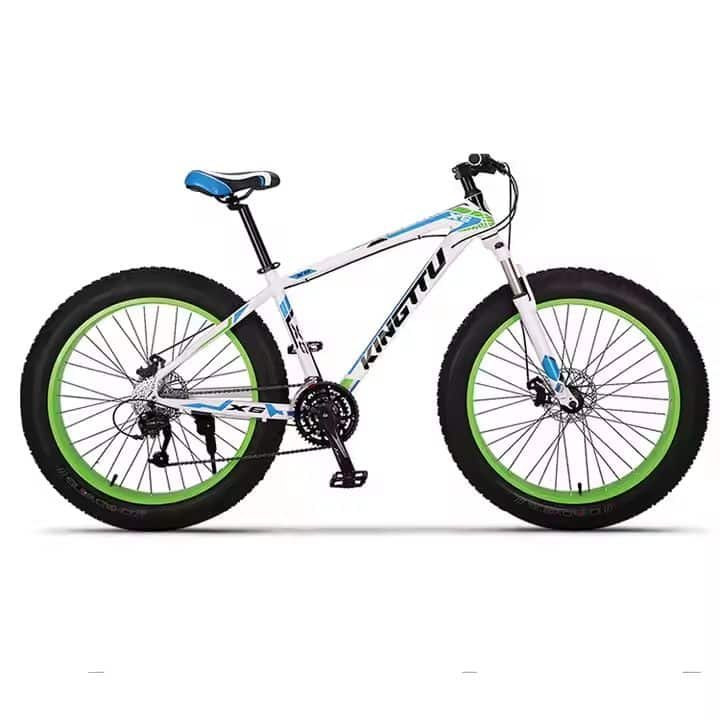
Introduction
Fat bike cycle have become increasingly popular among cycling enthusiasts and outdoor adventurers. With their oversized tires and sturdy frames, they are designed for tackling rough terrains, snow, and sand. This guide delves deep into everything you need to know about fat bike cycles, including their features, benefits, pricing, and top recommendations.
What is a Fat Bike Cycle?
A fat bike cycle is characterized by its wide tires, typically 3.8 inches or wider. This design provides improved traction and stability, making them ideal for off-road conditions. Whether you’re traversing snowy trails, sandy beaches, or rocky paths, fat bikes offer unparalleled performance.
Key Features of Fat Bike Cycles
- Wide Tires: The most defining feature, these tires provide superior grip and floatation.
- Sturdy Frames: Built to withstand rough terrains, often made from aluminum or carbon fiber.
- Versatility: Suitable for various terrains, including snow, mud, and sand.
- Lower Gearing: Enables easier climbing and maneuvering on challenging trails.
Benefits of Riding a Fat Bike Cycle
Enhanced Stability
- The wider tires distribute weight evenly, offering better balance.
- Improved traction allows for safer rides on slippery surfaces.
Year-Round Riding
- Fat bikes are not limited to summer trails; they excel in winter conditions.
- Enjoy cycling on snowy paths or sandy beaches without worry.
Adventure Ready
- Perfect for off-road cycling adventures, whether it’s mountain trails or coastal rides.
- Experience the thrill of exploring new terrains that standard bikes can’t handle.
Health Benefits
- Full-body workout due to the additional effort needed to pedal on varied terrains.
- Great for improving cardiovascular fitness and muscle strength.
Fat Bike Cycle Pricing
When considering a fat bike cycle, understanding the price range is crucial. Price can very significantly on the brand’s, material, and feature. Here’s a breakdown:

Budget Options (Under $1,000)
- Ideal for beginners looking to try fat biking without a hefty investment.
- Often made from heavier materials, but still functional for casual riding.
- Recommended brands: Mongoose, Gravity.
Mid-Range ($1,000 – $2,500)
- Offers better components, including improved gears and brakes.
- Lightweight materials and better suspension for a smoother ride.
- Recommended brands: Salsa, Specialized.
High-End ($2,500 and up)
- Professional-grade fat bikes with top-of-the-line components.
- Designed for serious enthusiasts and competitive riders.
- Recommended brands: Trek, Canyon.
Price Considerations
- New vs. Used: Buying a used fat bike can save you money, but ensure you check its condition.
- Accessories: Factor in the cost of necessary accessories such as helmets, lights, and maintenance kits.
Choosing the Right Fat Bike Cycle
Selecting the perfect fat bike cycle can be overwhelming with so many options available. Here are some key considerations:
Frame Material
- Aluminum: Lightweight and durable, making it a popular choice for many cyclists.
- Carbon Fiber: Offers excellent performance but at a higher price point.
- Steel: Heavier but provides a smooth ride and is often more affordable.
Tire Size
- 4.0 to 4.8 inches: Standard sizes that provide good floatation and grip.
- 5.0 inches and above: Ideal for extreme conditions like deep snow or sand.
Suspension Type
- Rigid: Offers simplicity and lower weight but less comfort on bumpy trails.
- Hardtail: Features front suspension for added comfort and control.
- Full-Suspension: Provides maximum comfort and control but tends to be pricier.
Fit and Comfort
- Test ride different models to find one that feels comfortable.
Top Fat Bike Cycle Recommendations
Salsa Mukluk
- Price: Around $1,899
- Features: Lightweight aluminum frame, versatile tire options, and great for winter rides.
- Why Choose: Known for its versatility and comfort on long rides.
Trek Farley 5
- Price: Approximately $2,199
- Features: Equipped with quality components, a stable frame, and aggressive tire tread.
- Why Choose: Excellent performance on various terrains.
Specialized Fatboy
- Price: About $2,499
- Features: High-end components, lightweight frame, and excellent handling.
- Why Choose: Perfect for serious cyclists who demand performance.
Maintenance Tips for Fat Bike Cycles
To ensure longevity and optimal performance, regular maintenance is crucial. Here are some essential tips:
Tire Care
- Check tire pressure regularly; low pressure can affect performance.
- Inspect for damage or wear, especially after rough rides.
Cleaning
- Clean your bike after each ride, especially if you’ve been in mud or snow.
- Use a gentle soap and brush to avoid damaging the frame or components.
Regular Tune-Ups
- Schedule tune-ups at a local bike shop at least once a year.
- Regular checks on brakes, gears, and chains can prevent costly repairs later.
Where to Buy Fat Bike Cycles
Online Retailers
- Amazon: Offer a wides selections and competitive price.
- Chain Reaction Cycles: Great for finding deals on various brands.
- Specialized Retailers: For high-end options and expert advice.
Local Bike Shops
- Provides the advantage of test riding before purchase.
- Access to expert advice and potential customization options.
Final Thoughts Of Fat Bike Cycle
Fat bike cycles open up a world of adventure for cyclists of all levels. With their ability to handle diverse terrains, they are a fantastic investment for those looking to enhance their biking experience. Whether you’re considering a fat bike cycle under $1,000 or aiming for a high-end model, there’s something for everyone. Remember to factor in maintenance, accessories, and your unique riding style when making your choice.
Embark on your fat biking journey today and experience the thrill of riding like never before!




